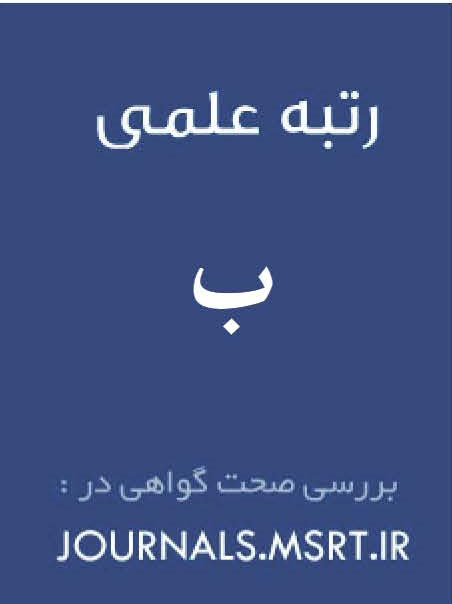Psychometric Properties and Standardization of the Maher Multiple Fluid Intelligence Test (MMFTI) in Students Aged 4 to 6
Keywords:
Psychometric properties, norming of the Multiple Fluid Intelligence Test (MMFTI), confirmatory factor analysis, exploratory factor analysisAbstract
Objective: The aim of the present study was to examine the psychometric properties and standardization of the Maher Multiple Fluid Intelligence Test (MMFTI) in early elementary school students.
Methods and Materials: The sample consisted of 800 children aged 7 to 9 years, who were selected through purposive sampling. The required data were collected using the Maher Multiple Fluid Intelligence Test (MMFTI). To assess construct validity, exploratory factor analysis was conducted using the Varimax rotation method. The Kaiser criterion and scree plot were used to determine the number of factors. The results revealed the extraction of five factors for fluid intelligence in both groups: perception, reasoning, memory, attention, and verbal processing in the age group of 7 to 9 years.
Findings: Confirmatory factor analysis results showed that the perception component had a factor loading of 0.32, reasoning 0.49, attention 0.58, memory 0.55, and verbal processing 0.65, all of which were statistically significant. Additionally, the exploratory factor analysis of the test items showed that the means and standard deviations of the items in all subtests were acceptable in relation to the total test score, and the correlation between each item and the total test score was significant. The reliability of each item compared to the overall test reliability was also deemed acceptable. Accordingly, the Cronbach's alpha coefficients for the components of fluid intelligence were as follows: reasoning (0.89), perception (0.79), attention (0.85), memory (0.74), and verbal processing (0.92), indicating a desirable level of internal consistency for the MMFTI subscales.
Conclusion: Given the appropriate coefficients of construct validity and reliability for all components of fluid intelligence, the test can be used as a standardized assessment tool for children aged 4 to 6 in kindergartens.
Downloads
References
Alborzi, M. M., & Khosh Lahjeh Sedgh, A. (2023). Prediction of sensation seeking and coping strategies based on emotional intelligence with the mediation of metacognitive beliefs in Qom province students. Iranian Journal of Neurodevelopmental Disorders, 2(2), 26-37. https://maherpub.com/jndd/article/view/27
Baramake, Z., Fadavi, M. S., & Yousefi, Z. (2024). Development of a Successful Intelligence Training Package Aimed at Reducing High-Risk Behaviors Especially for Teenagers. Journal of Psychological Dynamics in Mood Disorders (PDMD), 2(4), 101-114. https://doi.org/10.22034/pdmd.2024.444922.1054
Ershadi Chahardeh, S., Saadati Shamir, A., & Zabihi, R. (2024). The Effectiveness of Cognitive Empowerment Based on the Lumosity Program on Maher Crystallized Intelligence of Elementary School Boys. International Journal of Education and Cognitive Sciences, 5(5), 149-157. https://iase-ijeas.com/article_208857.html
Ghanbari, F., & Saadati Shamir, A. (2023). The Effectiveness of Mathematics Skills Training (I-Math) on Enhancing Crystallized and Fluid Intelligence in Primary School Students Islamic Azad University, Science and Research Branch]. https://www.iase-jrn.ir/article_713601.html
Goran Savadkouhi, L., Kamyabi, M., & Saadati Shamir, A. (2023). The Effectiveness of Metacognitive Skills Training on Increasing Fluid Intelligence in Middle School Students. Sociology of Education, 9(1), 424-440. https://www.iase-jrn.ir/article_713252.html
Kamkar, P., Dortaj, F., Saadi Pour, I., Delavar, A., & Barjaghi, A. (2021). The Effectiveness of Successful Intelligence Components Training Based on Sternberg's Triarchic Theory on Increasing Fluid Reasoning and Verbal Comprehension. Psychological Sciences, 20(104), 1521-1266. https://doi.org/10.52547/JPS.20.104.1251
Kamkar, P., Dortaj, F., Saedipour, E., Delavar, A., & Borjali, A. (2021). Investigating the Effectiveness of Successful Intelligence Components Training Based on Sternberg’s Triarchic Theory on Increasing Fluid Reasoning and Verbal Comprehension. The Journal of Psychological Science, 20(104), 1251-1266. https://doi.org/10.52547/jps.20.104.1251
Khosh Lahje Sedq, A., & Mohammadtahery, M. (2022). Prediction of self-esteem based on attachment style, metacognitive belief and emotional intelligence in college students. Iranian Journal of Neurodevelopmental Disorders, 1(3), 0-0. https://maherpub.com/jndd/article/view/8
Peng, P., Wang, T., Wang, C., & Lin, X. (2019). A meta-analysis on the relation between fluid intelligence and reading/mathematics: Effects of tasks, age, and social economics status. Psychological bulletin, 145(2), 189. https://doi.org/10.1037/bul0000182
Rastelli, C., Greco, A., & Finocchiaro, C. (2020). Revealing the Role of Divergent Thinking and Fluid Intelligence in Children’s Semantic Memory Organization. Journal of Intelligence, 8(4), 43. https://doi.org/10.3390/jintelligence8040043
Roghani, F., Saadati Shamir, A., Abdollahpour, A., & Hashemi, N. (2024). The Effectiveness of the Skilled Fluid Intelligence Psychological-Educational Intervention Package on Cognitive-Emotional Regulation in Children with Attention Deficit Hyperactivity Disorder. Psychological Dynamics in Mood Disorders, 3(2), 189-202. https://doi.org/10.61838/kman.pdmd.3.2.16
Roghani, F., Saadati Shamir, A., Abdollahpour, M. A., & Hashemi, N. (2024). The effectiveness of the skilled fluid intelligence psychological-educational intervention package on executive functions in children with attention deficit hyperactivity disorder. Sociology of Education, 10(2), 46-56. https://doi.org/10.61838/kman.pdmd.3.2.16
Roghani, F., Shamir, A., Abdollahpour, A., & Hashemi, N. (2024). The effectiveness of the "Maher Fluid Intelligence Psycho-Educational Intervention Package" on cognitive-emotional regulation in children with attention deficit hyperactivity disorder. Psychological Dynamics in Mood Disorders, 3(2), 189-202. https://doi.org/10.61838/kman.pdmd.3.2.16
Rzhanova, I. E., Britova, V. S., Алексеева, О., & Бурдукова, Ю. А. (2018). Fluid Intelligence: Review of Foreign Studies. Clinical Psychology and Special Education, 7(4), 19-43. https://doi.org/10.17759/cpse.2018070402
Saadati Shamir, A., & Zahmatkesh, Y. (2022). Introducing a tool: Development and standardization of the first version of the Multifaceted Crystallized Intelligence Test (MMFIT) for students aged 7 to 9. Quarterly Journal of Health and Education During Early Student Years, 3(2), 57-84. https://www.magiran.com/paper/2515892/introducing-a-test-construction-and-standardization-of-the-first-version-of-maher-multifunctional-fluid-intelligence-test-mmfit-for-children-age-7-to-9-years-old?lang=en
Salas, N., Escobar, J., & Huepe, D. (2021). Two sides of the same coin: fluid intelligence and crystallized intelligence as cognitive reserve predictors of social cognition and executive functions among vulnerable elderly people. Frontiers in Neurology, 12, 599378. https://doi.org/10.3389/fneur.2021.599378
Seadatee Shamir, A., & Zainab Zahamatkesh, Y. (2022). Introducing a test: construction and standardization of the first version of Maher Multifunctional Fluid Intelligence Test (MMFIT) for children age 7 to 9 years old [Research]. Early Childhood Health And Education, 3(2), 57-84. http://jeche.ir/article-1-85-en.html
Sternberg, R. J. (2021). Adaptive intelligence: Intelligence is not a personal trait but rather a person× task× situation interaction. Journal of Intelligence, 9(4), 58-69. https://doi.org/10.3390/jintelligence9040058
Sternberg, R. J., Siriner, I., Oh, J., & Wong, C. H. (2022). Cultural intelligence: What is it and how can it effectively be measured? Journal of Intelligence, 10(3), 54. https://doi.org/10.3390/jintelligence10030054
Sternberg, R. J., Todhunter, R. J. E., Litvak, A., & Sternberg, K. (2020). The Relation of Scientific Creativity and Evaluation of Scientific Impact to Scientific Reasoning and General Intelligence. J. Intell., 8(17). https://doi.org/10.3390/jintelligence8020017
Sternberg, R. J., Wong, C. H., & Sternberg, K. (2019). The relation of tests of scientific reasoning to each other and to tests of general intelligence. Journal of Intelligence, 7(3), 20. https://doi.org/10.3390/jintelligence7030020
Urban, K., & Urban, M. (2018). Influence of Fluid Intelligence on Accuracy of Metacognitive Monitoring in Preschool Children Fades With the Calibration Feedback. Studia psychologica, 60(2), 123-136. https://doi.org/10.21909/sp.2018.02.757
Downloads
Published
Versions
- 2025-10-05 (4)
- 2025-10-02 (3)
- 2025-10-02 (2)
- 2025-06-18 (1)
Submitted
Revised
Accepted
Issue
Section
License
Copyright (c) 2025 سارا شمس (نویسنده); ابوطالب سعادتی شامیر; آمنه السادات کاظمی (نویسنده)

This work is licensed under a Creative Commons Attribution-NonCommercial 4.0 International License.





